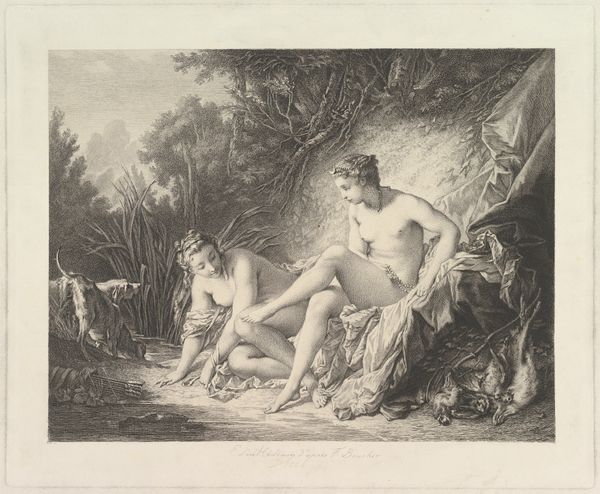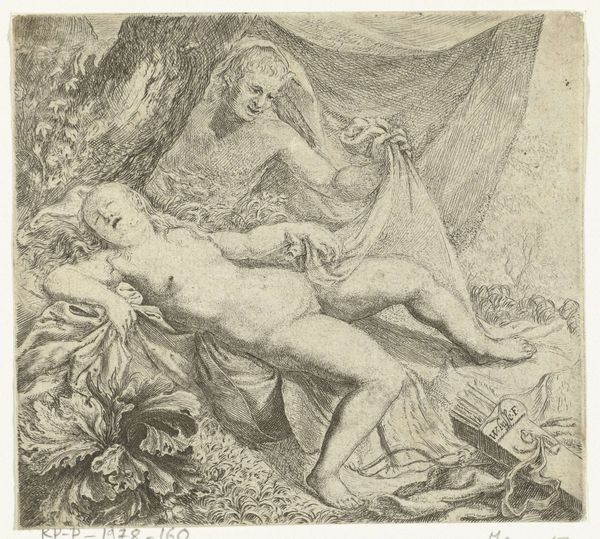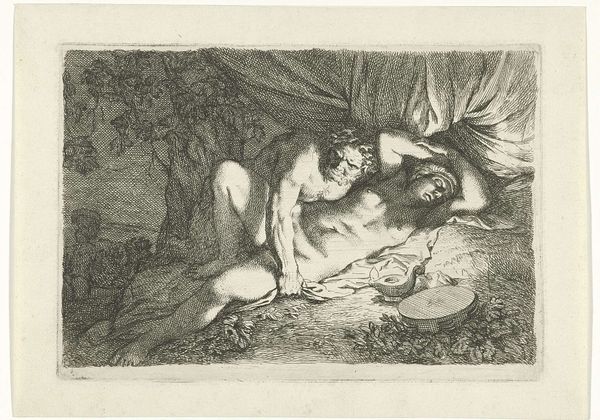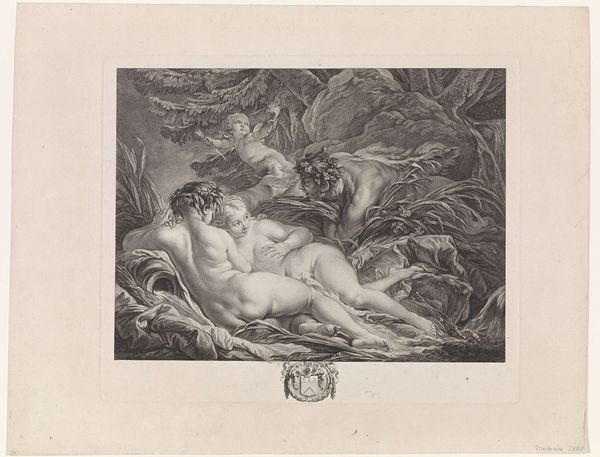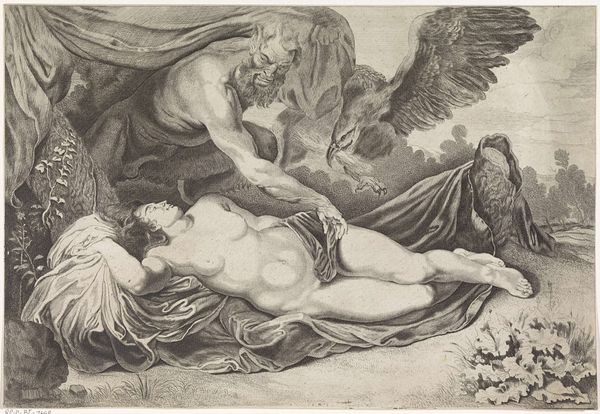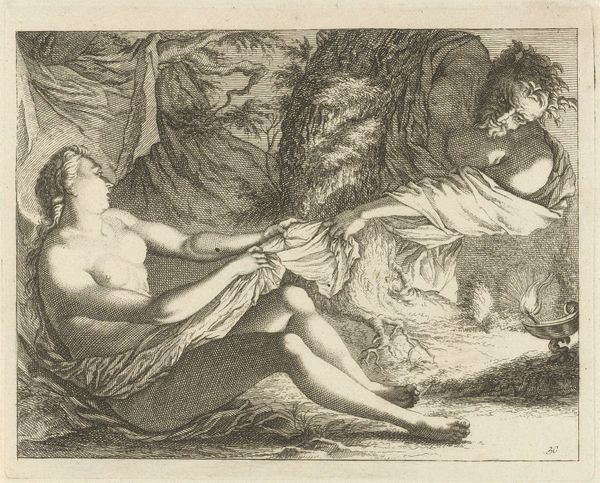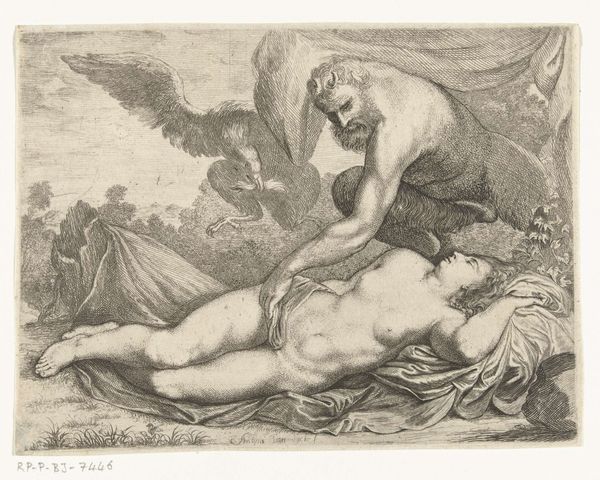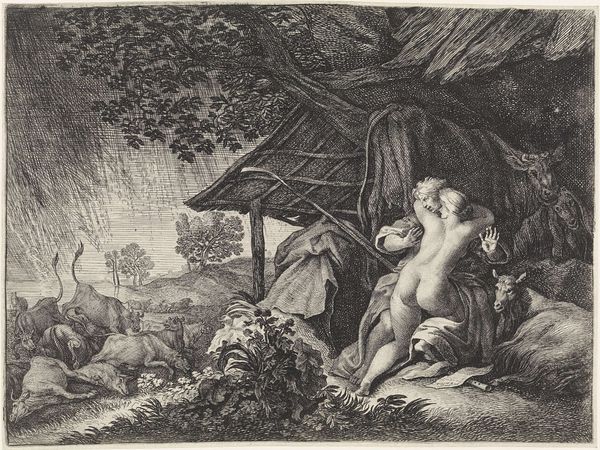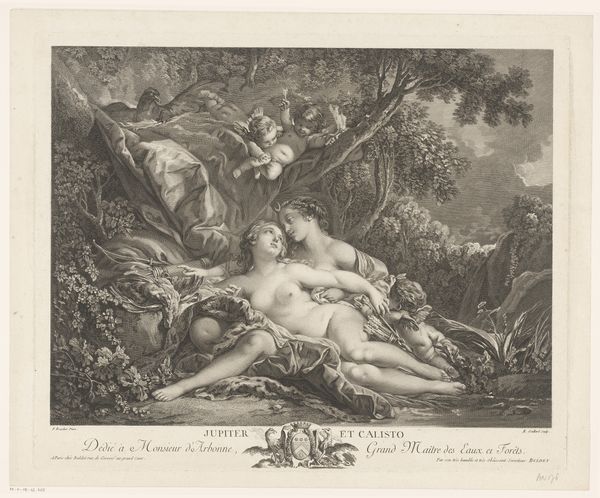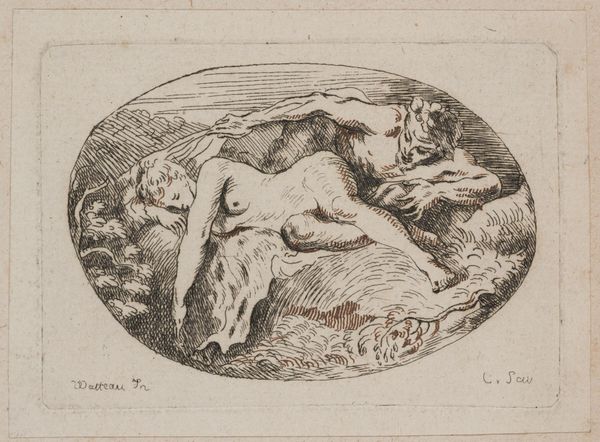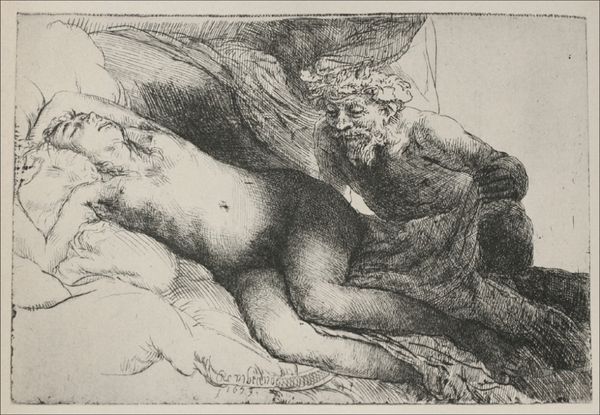
Dimensions: 141 mm (height) x 192 mm (width) (plademål)
Curator: Let's turn our attention to "Leda and the Swan," a compelling etching that dates from the late 18th century. The artist here is L. Enentier, and it’s currently held in the collection of the SMK, the National Gallery of Denmark. Editor: It strikes me as intensely… fragile, almost. The etching technique lends itself to delicate lines and a subtle diffusion of light. The swan's dark wings against Leda's pale body create an unsettling juxtaposition. Curator: The choice of etching, common in the 18th century, allowed for the relatively easy reproduction and dissemination of images, particularly those with mythological themes that were so popular with the aristocracy. Leda and the Swan is, of course, a well-known mythological tale, laden with symbolism. Editor: Precisely. It's difficult to ignore the violent undercurrents of this encounter. Even framed by mythological precedent, the depiction of a non-consensual act, packaged in beauty, feels deeply problematic for a modern viewer. We need to consider how the piece functions not only within art history but within the present-day discourse around power and gender. Curator: It's important to recognize that art from this period was often used to reinforce social and political norms. The theme of powerful beings having their way with mortals resonated within a society that was highly stratified and controlled. Gods and goddesses were often used as metaphors to excuse real abuses of power within human systems. Editor: Absolutely. Considering it through that lens invites an examination of how the power dynamics represented then continue to influence our cultural narratives. What impact does the continuous circulation of such images have on the public's imagination, particularly around ideas of consent and bodily autonomy? How complicit is art itself in normalizing exploitation by presenting it as aesthetic and divine? Curator: Those are vital questions. By acknowledging the difficult aspects alongside the artistic merit, we foster a more responsible and complete experience. Editor: Agreed. Understanding this piece as both a historical artifact and a point of social commentary makes its presence within this collection even more vital.
Comments
No comments
Be the first to comment and join the conversation on the ultimate creative platform.
